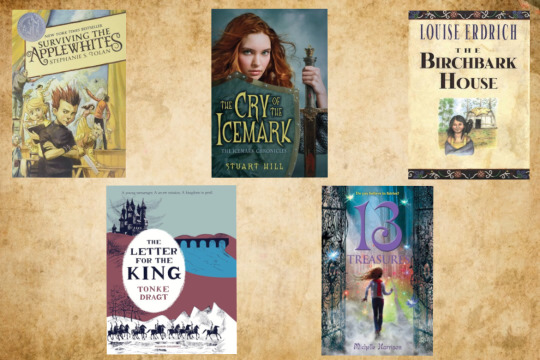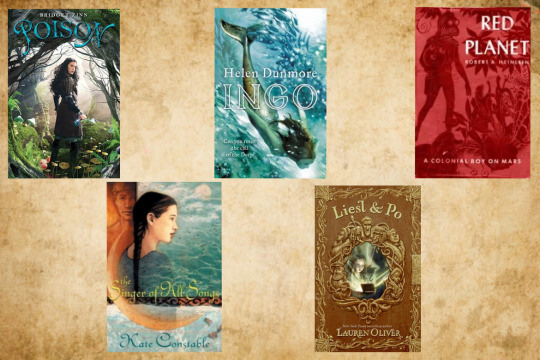#Birchbark Books
Explore tagged Tumblr posts
Text
Happy Native American Heritage Month 2023!
Happy Native American Heritage Month 2023! To celebrate, we’re featuring books starring queer Native American and First Nations characters, by Native American and/or First Nations authors, as well as indigqueer poetry. While the usual affiliate links are included, I encourage you to check out and purchase from Birchbark Books, whose links are included as well. To Buy Now Rabbit Chase by Elizabeth…
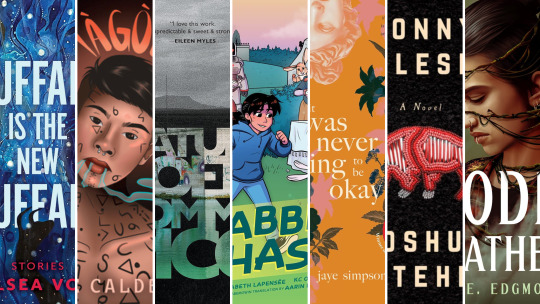
View On WordPress
#A Snake Falls to the Earth#Adam Garnet Jones#American Indian#Anishinaabe#Anong and the Ribbon Skirt#Arielle Twist#Birchbark Books#Cherie Dimaline#Cherokee#Craig S. Womack#Daniel Heath Justice#Darcie Little Badger#Dennis E. Staples#Drowning in Fire#Elijah Forbes#featured#Fire Song#First Nations#Gabe Calderón#Godly Heathens#H.E. Edgmon#Indigenous#Indigiqueer#Jen Ferguson#K.C. Oster#Màgòdiz#Métis#Muskogee Creek#Native American#Nature Poem
94 notes
·
View notes
Text
Was finally able to stop by Birchbark Books in MPLS the other day and I happened to have Hemlock with me and they allow dogs in their store. He was very good very tired from being at the indoor dog park earlier so he just laid at my feet while I browsed books. Also got a bookmark and a sticker. You can order from them online they’re wonderful.

3 notes
·
View notes
Text
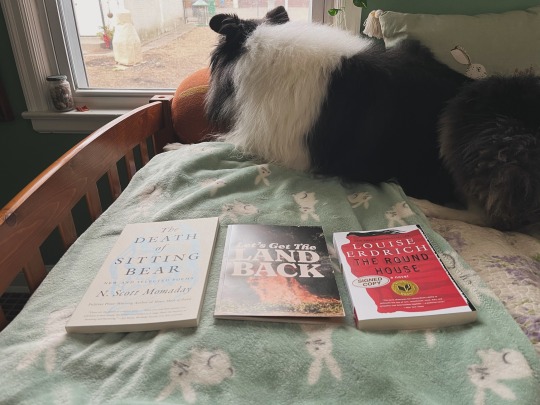
Book Haul from Birchbark Books & Native Arts today, a fabulous store in Minneapolis, MN! I feel so lucky to live in a city with so many bookstores.
• The Death of Sitting Bear: New and Selected Poems by N. Scott Momaday
• Let’s Get the Land Back: A Toolkit to Restore our Relations by PennElys Droz
• The Round House by Louise Erdrich
#godzilla reads#birchbark books#bookhaul#bookstore#books and dogs#my pets#book blog#the death of sitting bear#n scott momaday#let’s get the land back#the round house#louise erdrich#books#booklr#bookworm#reading#bookish
4 notes
·
View notes
Text
the boys and I all line up for the new robin wall kimmerer book like ants and one by one we all say Thank you dr kimmerer for your service
#that one pic that’s like ‘communism works by god giving one bean to each worker’#but it’s birchbark books in Minneapolis St. Paul giving the new robin wall kimmerer book to me in exchange for money#books#robin wall kimmerer
4K notes
·
View notes
Text
Summaries under the cut
Moon Base Alpha by Stuart Gibbs
Like his fellow lunarnauts—otherwise known as Moonies—living on Moon Base Alpha, twelve-year-old Dashiell Gibson is famous the world over for being one of the first humans to live on the moon.
And he’s bored out of his mind. Kids aren’t allowed on the lunar surface, meaning they’re trapped inside the tiny moon base with next to nothing to occupy their time—and the only other kid Dash’s age spends all his time hooked into virtual reality games.
Then Moon Base Alpha’s top scientist turns up dead. Dash senses there’s foul play afoot, but no one believes him. Everyone agrees Dr. Holtz went onto the lunar surface without his helmet properly affixed, simple as that. But Dr. Holtz was on the verge of an important new discovery, Dash finds out, and it’s a secret that could change everything for the Moonies—a secret someone just might kill to keep...
Adventurers Wanted by M. L. Forman
Do you have the courage, the wits, and the skill to claim a dragon's hoard? If so, apply within …
The sign is small, tucked into the corner of Mr. Clutter's bookshop window: "Adventurers Wanted. Apply Within." No one but fifteen-year-old Alex Taylor even seems to notice it is there. And for Alex, who has wished for a change in his life, it is an irresistible invitation.
Upon entering Mr. Clutter's shop, Alex is swept away on an incredible adventure to a faraway land filled with heroic warriors, mysterious elves, and hard-working dwarves.
Alex becomes the eigth man in a band of adventurers seeking the lair of Slathbog the Red - an evil dragon with a legendary treasure. Along the way, Alex and his new friends must battle dangerous trolls and bandits, face undead wraiths, and seek the wisdom of the Oracle in her White Tower.
Alex's adventure takes him to distant and exotic lands where he learns about courage, integrity, honor, and, most importantly, friendship.
Applewhites by Stephanie S. Tolan
Will anyone take on Jake Semple?
Jake Semple is notorious. Rumor has it he burned down his old school and got kicked out of every school in his home state.
Only one place will take him now, and that's a home school run by the Applewhites, a chaotic and hilarious family of artists. The only one who doesn't fit the Applewhite mold is E.D.—a smart, sensible girl who immediately clashes with the unruly Jake.
Jake thinks surviving this one will be a breeze . . . but is he really as tough or as bad as he seems?
The Letter for the King by Tonke Dragt
It is the dead of night.
Sixteen-year-old Tiuri must spend hours locked in a chapel in silent contemplation if he is to be knighted the next day.
But, as he waits by the light of a flickering candle, he hears a knock at the door and a voice desperately asking for help.
A secret letter must be delivered to King Unauwen across the Great Mountains - a letter upon which the fate of the entire kingdom depends. Tiuri has a vital role to play, one that might cost him his knighthood.
Tiuri's journey will take him through dark, menacing forests, across treacherous rivers, to sinister castles and strange cities. He will encounter evil enemies who would kill to get the letter, but also the best of friends in the most unexpected places.
He must trust no one.
He must keep his true identity secret.
Above all, he must never reveal what is in the letter...
Miracles on Maple Hill by Virginia Sorensen
Marly and her family share many adventures when they move from the city to a farmhouse on Maple Hill. Her father is recovering from being a prisoner-of-war. The small town and the varied happenings and activities of country life help them to recover from past unhappiness, and bond more closely as a family.
13 Treasures by Michelle Harrison
Tanya has a secret. She can see fairies.
But not the fairies we imagine. These fairies cast spells on her, rousing her from her sleep and propelling her out of bed. Disturbed by her daughter’s behaviour, Tanya’s mother sends her away to live with her grandmother at Elvesden Manor, a secluded countryside mansion on the outskirts of town.
Then an old photograph leads Tanya to an unsolved mystery. Fifty years ago a girl vanished in the woods, a girl Tanya’s grandmother will not speak of. Tanya is determined to find the truth, but as she unearths more secrets she finds herself dangerously close to following in the missing girl’s footsteps . . .
The Birchbark House by Louise Erdrich
This same slice of history is seen through the eyes of the spirited, 7-year-old Ojibwa girl Omakayas, or Little Frog, so named because her first step was a hop. The sole survivor of a smallpox epidemic on Spirit Island, Omakayas, then only a baby girl, was rescued by a fearless woman named Tallow and welcomed into an Ojibwa family on Lake Superior's Madeline Island, the Island of the Golden-Breasted Woodpecker. We follow Omakayas and her adopted family through a cycle of four seasons in 1847, including the winter, when a historically documented outbreak of smallpox overtook the island.
Poison by Bridget Zinn
Sixteen-year-old Kyra, a highly-skilled potions master, is the only one who knows her kingdom is on the verge of destruction—which means she’s the only one who can save it. Faced with no other choice, Kyra decides to do what she does best: poison the kingdom’s future ruler, who also happens to be her former best friend.
But, for the first time ever, her poisoned dart . . . misses.
Now a fugitive instead of a hero, Kyra is caught in a game of hide-and-seek with the king’s army and her potioner ex-boyfriend, Hal. At least she’s not alone. She’s armed with her vital potions, a too-cute pig, and Fred, the charming adventurer she can’t stop thinking about. Kyra is determined to get herself a second chance (at murder), but will she be able to find and defeat the princess before Hal and the army find her?
The Chanters of Tremaris by Kate Constable
Calwyn has never been beyond the high ice-wall that guards the sisters of Antaris from the world of Tremaris. She knows only the rounds of her life as a novice ice priestess, tending her bees, singing her ice chantments, and dreaming.
But then Calwyn befriends Darrow, a mysterious Outlander who appears inside the Wall and warns of an approaching danger. To help Darrow, to see the world, and perhaps to save it, Calwyn will leave the safety of the Wall for a journey with a man she barely knows—and an adventure as beautiful and dangerous as the music of chantment itself.
Ingo by Helen Dunmore
Sapphire's father mysteriously vanishes into the waves off the Cornwall coast where her family has always lived. She misses him terribly, and she longs to hear his spellbinding tales about the Mer, who live in the underwater kingdom of Ingo. Perhaps that is why she imagines herself being pulled like a magnet toward the sea. But when her brother, Conor, starts disappearing for hours on end, Sapphy starts to believe she might not be the only one who hears the call of the ocean.
#best childhood book#poll#moon base alpha#adventurers wanted#applewhites#the letter for the king#miracles on maple hill#13 treasures#the birchbark house#poison#the chanters of tremaris#ingo
13 notes
·
View notes
Text
thank god someone set up a little website with all the family trees for erdrich's justice trilogy, because its making keeping track of these characters families and bloodlines very easy
#the three books cover three small towns around a reservation and the generations of families that intersect#and are connected through horrible crimes (lynching. murder. rape) and wonders of life (babies. marriages. familial love and strength#the good parts of religion)#but also a lot of the bad parts of religion. because these characters are all native american and descended#from people forced to convert#the reason im confused is because i started the series with the middle book which i read for uni last august#so in the current one certain things are making sense that didnt in the next book#and family connections are clearing up#god erdrich is good at creating a complicated intertwining narrative though all of these characters are interesting and complex i love it#and the way it scapes many years from the late late 1800s to the 1980#its fantastic#i wanna visit minnesota just to go to her independent bookstore birchbark books. it looks gorgeous and the books they sell there#fiction + non-fiction#look fantastic. incredibly helpful as well
1 note
·
View note
Text
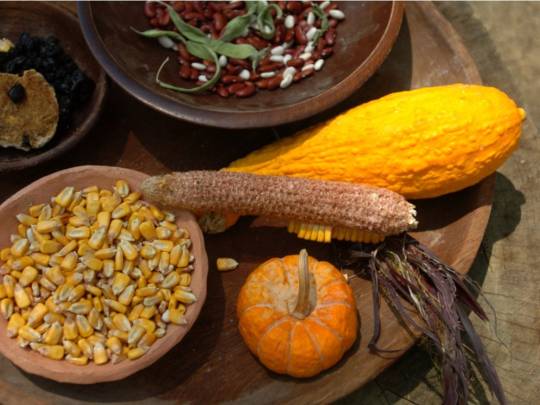

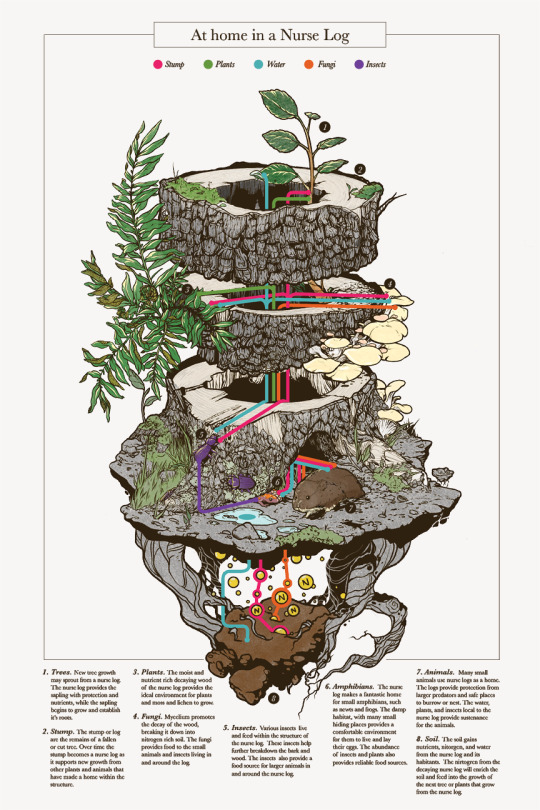
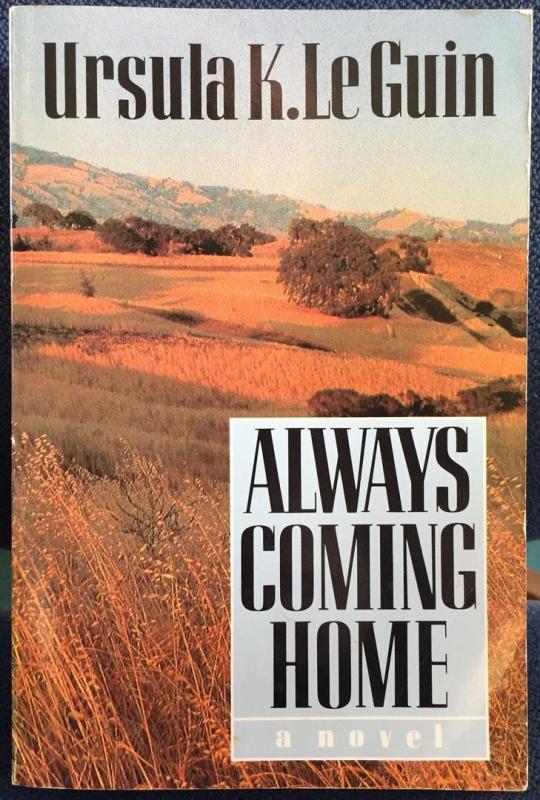
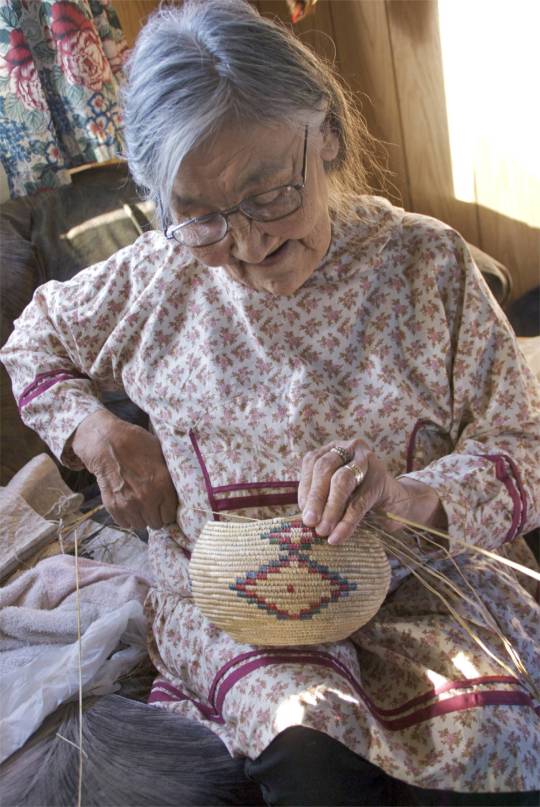

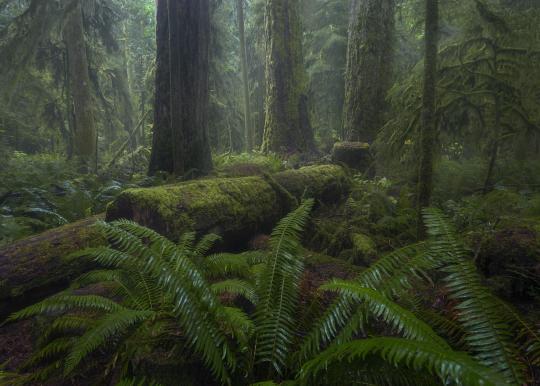
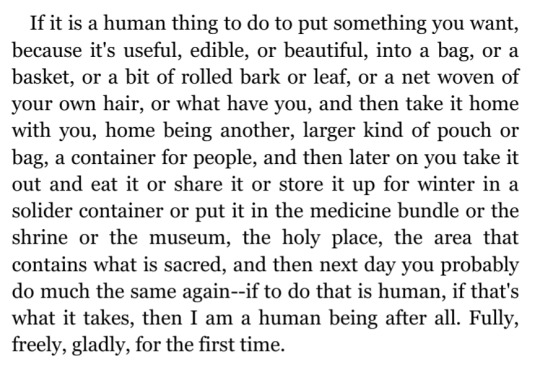
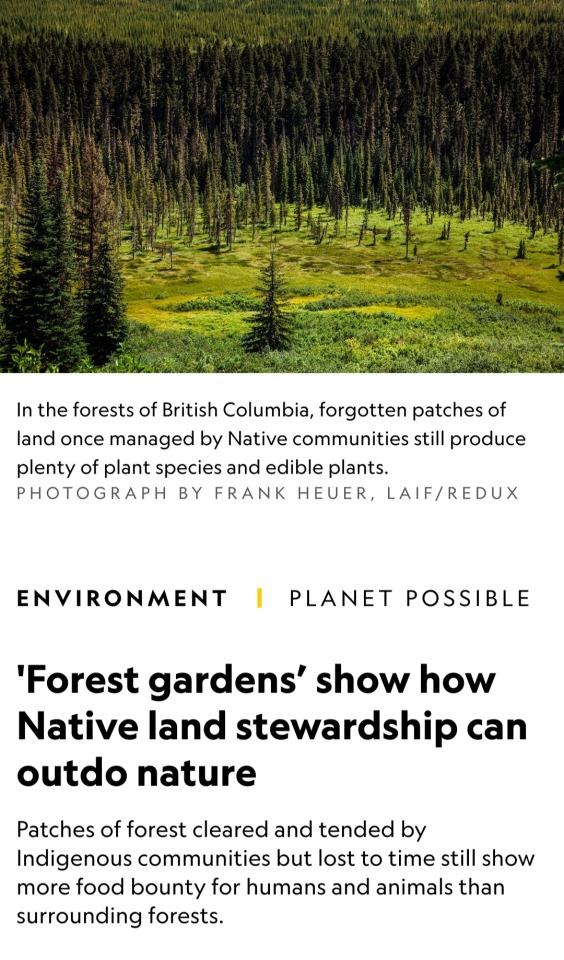

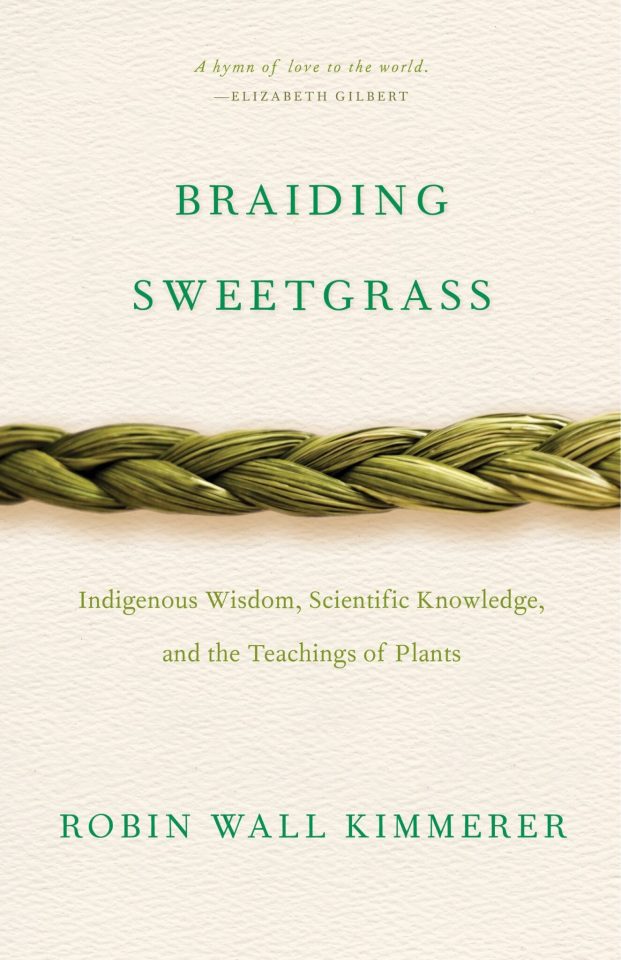
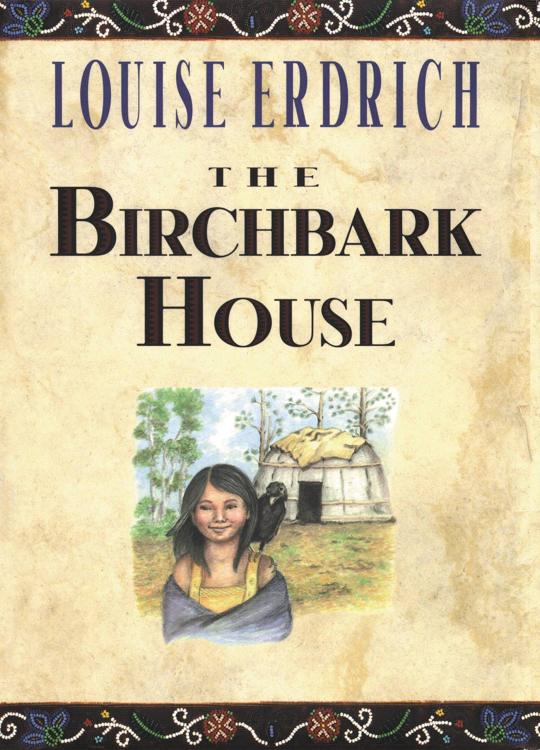

times, places, and practices that I want to learn from to imagine a hopeful future for humanity 🍃
the three sisters (squash, beans, maize) stock photo - alamy // anecdote by Ira Byock about Margaret Mead // art by Amanda Key // always coming home by Ursula K. Le Guin // Yup'ik basket weaver Lucille Westlock photographed by John Rowley // the left hand of darkness by Ursula K. Le Guin // photo by Jacob Klassen // the carrier bag theory of fiction by Ursula K. Le Guin // article in national geographic // the dawn of everything by David Graeber and David Wengrow // braiding sweetgrass by Robin Wall Kimmerer // the birchbark house by Louise Erdrich // photo by John Noltner
I'm looking for more content and book recs in this vein, so please send them my way!
#solarpunk#hopepunk#braiding sweetgrass#just a collection of books and pictures that make me hopeful for the future#margaret mead#robin wall kimmerer#nature#ursula k le guin#ursula k. le guin#the left hand of darkness#the carrier bag theory of fiction#the dawn of everything#anthropology#future#hopecore#native plants#biodiversity#sustainability#eco#eco friendly#louise erdrich#civilization
3K notes
·
View notes
Note
to jump off a post you just reblogged but Where are good places to look for good original fiction? Been trying to read more but not sure where to start looking for even lightly obscure stuff and trawling all like amazon new releases seems unfeasible
here is an incomplete list of places I scope new books, not including just wandering around the library or my local indie bookstore:
BookBrowse
BookPage
Bookshop
Book Riot
Electric Lit
Indie Next List
Jack Edwards
Lexie Newlynova
Literary Hub
NYT Book Review (I know, sue me)
Paste
The Stacks
websites of cool indie bookstores are also a great place to browse, and buy from. definitely see who you've got popping close to home, but here are just a few places I'm fond of:
Birchbark Books (Minneapolis, MN)
Black Garnet Books (St. Paul, MN)
Literati (Ann Arbor, MI)
Papercut Books (Wilmington, NC)
Snowbound Books (Marquette, MI)
This House of Books (Billings, MT)
Women & Children First (Chicago, IL)
I also super recommend checking out the social media of authors you already like to see what they're reading/hyping up (this is something I miss so so much about twitter), as well as the websites of publishers who publishes some of your existing faves.
95 notes
·
View notes
Text
some smaller bookstores, presses, and museum shops to browse and know about! Most support smaller presses, diverse authors and authors in translation, or fund museums and arts research)
(disclaimer: the only three I’ve personally used are the Yiddish book center, native books, and izzun books! Reccomend all three. Also roughly *U.S. centric & anglophone if people have others from around the world please feel free to add on
birchbark books - Louise Erdrich’s book shop, many indigenous and First Nations books of a wide variety of genres including children’s books, literature, nonfiction, sustainability and foodways, language revitalization, Great Lakes area focus (https://birchbarkbooks.com/)
American Swedish institute museum store - range of Scandinavian and Scandinavian-American/midwestern literature, including modern literature in translation, historical documents, knitters guides, cookbooks, children’s books https://shop.asimn.org/collections/books-1
Native books - Hawai’i based bookstore with a focus on native Hawaiian literature, scholarly works about Hawai’i, the pacific, and decolonial theory, ‘ōlelo Hawai’i, and children’s books Collections | Native Books (nativebookshawaii.org)
the Yiddish book center - sales arm of the national Yiddish book center, books on Yiddish learning, books translated from Yiddish, as well as broader selection of books on Jewish history, literature, culture, and coooking https://shop.yiddishbookcenter.org/
ayin press - independent press with a small but growing selection of modern judaica https://shop.ayinpress.org/collections/all?_gl=1kkj2oo_gaMTk4NDI3Mzc1Mi4xNzE1Mzk5ODk3_ga_VSERRBBT6X*MTcxNTM5OTg5Ny4xLjEuMTcxNTM5OTk0NC4wLjAuMA..
Izzun books - printers of modern progressive AND masorti/trad-egal leaning siddurim including a gorgeous egalitarian Sephardic siddur with full Hebrew, English translation, and transliteration
tenement center museum -https://shop.tenement.org/product-category/books/page/11/ range of books on a dizzying range of subjects mostly united by New York City, including the history literature cookbooks and cultures of Black, Jewish, Italian, Puerto Rican, First Nations, and Irish communities
restless books - nonprofit, independent small press focused on books on translation, inter and multicultural exchange, and books by immigrant writers from around the world. Particularly excellent range of translated Latin American literature https://restlessbooks.org/
olniansky press - modern Yiddish language press based in Sweden, translators and publishers esp of modern Yiddish children’s literature https://www.etsy.com/shop/OlnianskyBooks
https://yiddishchildrensbooks.com/ - kinder lokshen, Yiddish children’s books (not so many at the moment but a very cute one about a puffin from faroese!)
inhabit books - Inuit-owned publishing company in Nunavut with an “aim to preserve and promote the stories, knowledge, and talent of Inuit and Northern Canada.” Particularly gorgeous range of children’s books, many available in Inuktitut, English, French, or bilingual editions https://inhabitbooks.com/collections/inhabit-media-books-1
rust belt books - for your Midwest and rust belt bookish needs! Leaning towards academic and progressive political tomes but there are some cookbooks devoted to the art of the Midwest cookie table as well https://beltpublishing.com/
#Books#shopping reccomendations#Targeted/smaller and more specific presses can be jsut as dangerous even more so as you find so many things you didn’t know you needed!#(But you do! You so very much d)#Esp if you’re feeling like something beyond target book club picks lol
201 notes
·
View notes
Text
Inupiaq Books
This post was inspired by learning about and daydreaming about visiting Birchbark Books, a Native-owned bookstore in Minneapolis, so there will be some links to buy the books they have on this list.
Starting Things Off with Two Inupiaq Poets
Joan Naviyuk Kane, whose available collections include:
Hyperboreal
Black Milk Carbon
The Cormorant Hunter's Wife
She also wrote Dark Traffic, but this site doesn't seem to carry any copies
Dg Nanouk Okpik, whose available collections include
Blood Snow
Corpse Whale
Fictionalized Accounts of Historical Events
A Line of Driftwood: the Ada Blackjack Story by Diane Glancy, also available at Birchwood Books, is a fictionalized account of Ada Blackjack's experience surviving the explorers she was working with on Wrangel Island, based on historical records and Blackjack's own diary.
Goodbye, My Island by Rie Muñoz is a historical fiction aimed at younger readers with little knowledge of the Inupiat about a little girl living on King Island. Reads a lot like an American Girl book in case anyone wants to relive that nostalgia
Blessing's Bead by Debby Dahl Edwardson is a Young Adult historical fiction novel about hardships faced by two generations of girls in the same family, 70 years apart. One reviewer pointed out that the second part of the book, set in the 1980s, is written in Village English, so that might be a new experience for some of you
Photography
Menadelook: and Inupiaq Teacher's Photographs of Alaska Village Life, 1907-1932 edited by Eileen Norbert is, exactly as the title suggests, a collection of documentary photographs depicting village life in early 20th century Alaska.
Nuvuk, the Northernmost: Altered Land, Altered Lives in Barrow, Alaska by David James Inulak Lume is another collection of documentary photographs published in 2013, with a focus on the wildlife and negative effects of climate change
Guidebooks (i only found one specifically Inupiaq)
Plants That We Eat/Nauriat Niģiñaqtuat: from the Traditional Wisdom of Iñupiat Elders of Northwest Alaska by Anore Jones is a guide to Alaskan vegetation that in Inupiat have subsisted on for generations upon generations with info on how to identify them and how they were traditionally used.
Anthropology
Kuuvangmiut Subsistence: Traditional Eskimo Life in the Latter Twentieth Century by Douglas B. Anderson et al details traditional lifestyles and subsistance customs of the Kobuk River Inupiat
Life at the Swift Water Place: Northwest Alaska at the Threshold of European Contact by Douglas D. Anderson and Wanni W. Anderson: a multidisciplinary study of a specific Kobuk River group, the Amilgaqtau Yaagmiut, at the very beginning of European and Asian trade.
Upside Down: Seasons Among the Nunamiut by Margaret B. Blackman is a collection of essays reflecting on almost 20 years of anthropological fieldwork focused on the Nunamiut of Anuktuvuk Pass: the traditional culture and the adaption to new technology.
Nonfiction
Firecracker Boys: H-Bombs, Inupiat Eskimos, and the Roots of the Environmental Movement by Dan O'Neill is about Project Chariot. In an attempt to find peaceful uses of wartime technology, Edward Teller planned to drop six nukes on the Inupiaq village of Point Hope, officially to build a harbor but it can't be ignored that the US government wanted to know the effects radiation had on humans and animals. The scope is wider than the Inupiat people involved and their resistance to the project, but as it is no small part of this lesser discussed moment of history, it only feels right to include this
Fifty Miles From Tomorrow: a Memoir of Alaska and the Real People by William L. Iģģiaģruk Hensley is an autobiography following the author's tradition upbringing, pursuit of an education, and his part in the Alaska Native Settlement Claims Act, where he and other Alaska Native activists had to teach themselves United States Law to best lobby the government for land and financial compensation as reparations for colonization.
Sadie Bower Neakok: An Iñupiaq Woman by Margaret B. Blackman is a biography of the titular Sadie Bower Neakok, a beloved public figure of Utqiagvik, former Barrow. Neakok grew up one of ten children of an Inupiaq woman named Asianggataq, and the first white settler to live in Utqiagvik/Barrow, Charles Bower. She used the out-of-state college education she received to aid her community as a teacher, a wellfare worker, and advocate who won the right for Native languages to be used in court when defendants couldn't speak English, and more.
Folktales and Oral Histories
Folktales of the Riverine and Costal Iñupiat/Unipchallu Uqaqtuallu Kuungmiuñļu Taģiuģmiuñļu edited by Wanni W. Anderson and Ruth Tatqaviñ Sampson, transcribed by Angeline Ipiiļik Newlin and translated by Michael Qakiq Atorak is a collection of eleven Inupiaq folktales in English and the original Inupiaq.
The Dall Sheep Dinner Guest: Iñupiaq Narratives of Northwest Alaska by Wanni W. Anderson is a collection of Kobuk River Inupiaq folktales and oral histories collected from Inupiat storytellers and accompanied by Anderson's own essays explaining cultural context. Unlike the other two collections of traditional stories mentioned on this list, this one is only written in English.
Ugiuvangmiut Quliapyuit/King Island Tales: Eskimo Historu and Legends from Bering Strait compiled and edited by Lawrence D. Kaplan, collected by Gertrude Analoak, Margaret Seeganna, and Mary Alexander, and translated and transcribed by Gertrude Analoak and Margaret Seeganna is another collection of folktales and oral history. Focusing on the Ugiuvangmiut, this one also contains introductions to provide cultural context and stories written in both english and the original Inupiaq.
The Winter Walk by Loretta Outwater Cox is an oral history about a pregnant widow journeying home with her two children having to survive the harsh winter the entire way. This is often recommended with a similar book detailing Athabascan survival called Two Old Women.
Dictionaries and Language Books
Iñupiat Eskimo Dictionary by Donald H. Webster and Wilfred Zibell, with illustrations by Thelma A. Webster, is an older Inupiaq to English dictionary. It predates the standardization of Inupiaq spelling, uses some outdated and even offensive language that was considered correct at the time of its publication, and the free pdf provided by UAF seems to be missing some pages. In spite of this it is still a useful resource. The words are organized by subject matter rather than alphabetically, each entry indicating if it's specific to any one dialect, and the illustrations are quite charming.
Let's Learn Eskimo by Donald H. Webster with illustrations by Thelma A. Webster makes a great companion to the Iñupiat Eskimo Dictionary, going over grammar and sentence structure rather than translations. The tables of pronouns are especially helpful in my opinion.
Ilisaqativut.org also has some helpful tools and materials and recommendations for learning the Inupiat language with links to buy physical books, download free pdfs, and look through searchable online versions
168 notes
·
View notes
Text
More silly/interesting/unhinged stuff I read in the Warriors Wiki trivia tabs part 2
Ashfur:

LMAO

Ooh, okay, but has anyone drawn him or Ferncloud this tawny colour?
Cloverfoot:
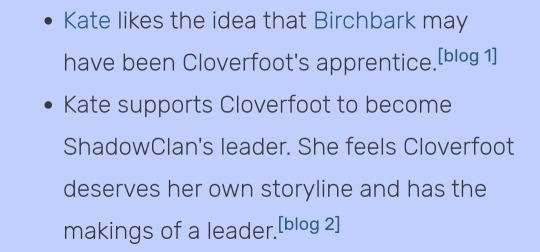
Bit of a tight timeline but I also REALLY like this idea. I also miss Birchbark :(
The likelihood of Cloverstar in canon is really low, though deputies aren't dying quite like they used to, so... Maybe?
Brokenstar:

Forgive me if anyone else has brought this up, but what if he really did have a power similar to Yellowfang? I really wish we had gotten a proper POV for this little bastard.
Thunderstar:

I have to admit. I am an Orange Shell Claw truther. Shell Claw being a Thunderstar mini me is very nice to imagine.
Heathertail:

I'm inclined to believe Vicky here. Sedgekit of the time felt like a very prideful, blabbermouth kitten. Dark River is still one of the books I really like.
Spottedleaf:

I know this was one of those "retconned mistakes" but... I just love the thought of Graypaw being confidently wrong just to insult his brother.

She was there, in spirit... Or Leopardstar is tripping balls.
Leafstar:

She was depicted like this for SO long I actually really like that depiction. I love Comic!Leafstar.
Frostpaw:

Teeny, tiny Frostpaw next to a GIGANTIC SALMON PLUSHIE plz
#warrior cats#warriors#warriors wiki#ashfur#ferncloud#cloverfoot#birchbark#brokenstar#thunderstar#shell claw#heathertail#sedgewhisker#spottedleaf#leopardstar#leafstar#frostpaw
125 notes
·
View notes
Text
Birchbark, the 1893 World's Fair, and Native resistance

Printed on actual sheets of birchbark, Potawatomi leader Simon Pokagon’s The red man’s greeting��is a living entity.
Published as a response to the 1893 World’s Columbian Exposition in Chicago, the book’s materiality and text provided a counter-narrative to the celebration of “progress” at the fair. In the process, Pokagon challenged the representation of Native people and cultures as vanishing relics of the past.
Pokagon also questioned the entire premise of the event: the commemoration of the 400th anniversary of Columbus’s “discovery” of the Americas. In the opening words of his book, Pokagon wrote:
In behalf of my people, the American Indians, I hereby declare to you, the pale-faced race that has usurped our lands and homes, that we have no spirit to celebrate with you the great Columbian Fair now being held in this Chicago city, the wonder of the world...
Read the full post at newberry.org


The red man's greeting, 1893 | Chief Pokagon portrait, 1898
#newberry library#libraries#special collections#native american history#native american heritage month#indigenous history#collection stories
20 notes
·
View notes
Text
“The Mighty Red,” the title of Louise Erdrich’s rambunctious new novel, definitely refers to North Dakota’s Red River, around which much of it is set, and probably refers to a large, red-headed character named Hugo.
A central event in “Mighty Red” is the marriage of a young woman named Kismet, but will she end up with brash Gary or gentle Hugo? Most of the characters have something to say about that, including Kismet’s mom Crystal, a truck driver who hauls sugar beets and whom Erdrich— a Pulitzer Prize winner for “The Night Watchman,” National Book Award winner for “The Round House” and owner of Birchbark Books in Minneapolis — says is something of a stand-in for her.
Erdrich, a member of the Turtle Mountain Band of Chippewa who lives in Minneapolis, has written 20 books.
Q: What came first when you were dreaming up “The Mighty Red”?
A: The first character I really thought about was Hugo. He goes back about 10 years and just kept plodding back into my notebooks with his obsessions about geology and energy and with his hapless ardor. I guess a lot of this book is about hapless ardor. Here we are, wired to mate, yet relationships are so ridiculous and awkward and, if you are lucky, magical.
The goal in my books is never to get two people together and leave them marooned, but to explore the tension and idiocy in a relationship. I mean, love. When love gets to a critical madness, people get married to reduce the madness to manageable increments of madness — like who keeps track of the vacuum cleaner attachments? Who deals with the mice? Who mislabeled the electrical box? Forget nosegays and frothed milk. Dawn dish soap becomes the thing you can’t live without. Like Kismet, you may end up making three-egg breakfasts for your husband’s family and eating your own breakfast out in the garage.
Q: Like “ The Sentence,” “The Mighty Red” is set in the recent past. Lots of “Sentence” readers were struck by your ability to evoke pandemic-era behaviors (like sanitizing the mail) that we engaged in, quit and then promptly forgot. Is it tricky to capture a past that most readers lived through?
A: You’re right. We forget the details of what we live through. This book is set in 2008-2009. The first hint I had of the mortgage crisis was running into someone I knew who was shaking and distraught over losing the house into which she’d sunk all she owned. It was devastating and it was happening everywhere.
Something like this happens to my somewhat alter-ego Crystal. There are other books about why and how this huge con game exploded, but I wanted to write about the way 2008-09 affected a few families. I thought about this a lot, how close we came to a serious economic depression, and how bad it was anyway. Part of my research was listening to the archived late night call-in shows with Art Bell, “Coast to Coast.”
Q: Which Crystal listens to, as well. Any more research?
A: Then I really lost my mind diving into how Roundup Ready seeds were developed, also at that time. I couldn’t think about anything but herbicides and pesticides. I became a known conversation killer. A lot of farming is degenerative as opposed to regenerative, and obviously that’s got to stop. Most of the farmers I know are doing their best to use few chemicals and do right by their land. They are some of the smartest people I know.
But they are running businesses. Sugar is a dirty business. However, sugar is delicious. At the end result of all those herbicides and petrochemicals and semi trucks and processing is pure, white, sparkly, granulated sugar. It is integral to our food chain now, it hits the pleasure centers in your brain like rocket fuel, and even having written this book I still love cake and ice cream.
Q: Many novels address climate crisis but I can’t recall one that makes it as easy to relate to as, for instance, the passage about the effort that goes into re-establishing prairie. Is it important to you to personalize for readers what we’ve done to our planet?
A: I wanted people to read this book, so to keep things cheerful I only sprinkled the dire stuff into the trauma of a wedding. You know — Absurd Proposal, Strange Vows, Violent Wedding Dinner, Questionable Marriage, Aftermarriage. Maybe the real bond is with the land and sky. The book is also a love letter to the Red River Valley, where I grew up. The valley along the river has changed drastically during my life and I wanted to know why. I wasn’t looking for simple answers or heroes and villains (except Hugo, hero). Nothing lines up that way.
Q: The title character of the book, or at least one of them, is a river, which you describe as “everything.” Can you talk about how living in a river valley shapes these people?
A: Are you asking whether there is a character trait that people who live along and depend on a river share? Or a lake? I don’t know — maybe love of walleye? Certain members of my family and I have been conducting a longitudinal study of who — aside from my brother Ralph — makes the best fried walleye in the Upper Midwest. We have a long way to go, but so far the Creekside Supper Club (Red Lake walleye) comes closest to the sine qua non of walleye (without which life is meaningless) on a good night at the Sky Dancer Casino (Lake Winnipeg walleye) in the Turtle Mountains. If people want to write to the Minnesota Star [Tribune] with the results of their own studies, that would be great. Just don’t contact me about this. I can’t let any extraneous information spoil the parameters of my own investigation.
Q: I can’t wait to see that striking cover in stores. I know it’s designed by your daughter, Aza Abe, who has done many of your covers. How important are covers to you, as both a writer and bookseller?
A: Covers tell the bookseller and the reader how much a publisher cares about the book. (An author usually doesn’t get much say.) I love how covers can be art that wasn’t created for the book and yet be all about the book. When I am bowled over by a new novel in manuscript, and then the final cover isn’t good enough for the book, I’m so upset.
I’m beyond lucky to have my daughter Aza Abe, a remarkable woman and tremendous artist, as the cover artist. I’m so grateful that she and I were able to start working together. Every one of her covers is stellar and says something about the book that can only be said visually. A reader should turn back and forth from the text to the cover and always find something to think about. That always happens with her images.
Take this particular cover. Aza’s image is about the origin of the Red River, where three rivers come together and flow north. The river is white because it’s sugar. The earth is deep black with gold flecks because good soil is the earth’s wealth. The letters are strong and bold because that’s the river, too.
Q: You never seem to judge your characters. Has that always been crucial to your work? Do you have other “rules” for writing?
A: A lot of being a writer is getting out of your own way. I try to simply report on what the characters are doing and thinking. If I make a judgment, it is in the voice of a character reflecting on what they’ve done. It’s not that I’m so high-minded, it’s more that it’s intrusive for a writer to make a judgment. And the reader is bound to wonder why, if you, the writer, have such a poor opinion about your character, why not just redeem them? I am opposed to redemption in a book. Maybe that’s a rule, but I break that rule if it needs breaking.
Q: What surprised you most in writing this novel?
A: The arrogant wealthy jock, Gary, surprised me. What a jackass. But then as I wrote him, I began to discover how vulnerable he was, how ridiculous, how haunted. He became my favorite character to write.
Q: Gary — and much of “The Mighty Red” itself — is really funny. Readers are going to get a bang out of these people (one line I’m thinking of is, “She loved Hugo with that superb kind of love a mother has for a male child, a love that is deeper and more pure for knowing that he’ll more than likely turn out a fool.”). Obviously, writing a novel is hard work, but was it fun to hang with these characters?
A: Yes, most days I’m lying on the floor, just wiped out, but it’s worth it on the days I’m laughing my head off.
Q:“The Mighty Red” is tough but hopeful. Do you find your way toward hope in the act of storytelling or is it in you already and that’s what pulls the story toward hope?
A: I don’t see the point of writing a book that doesn’t hold out hope. Things are getting so dire that, no matter how annoying and crazy-making we all are, we have to pull together. We need to work on a livable world. Nihilism just strikes me as lazy, and pretentious. Anyway, it’s the serious people who are leading with hope in these times.
Q: I don’t want to spoil it for readers but that last paragraph is such a knockout. What was the hardest part of “The Mighty Red” to get right? Or the easiest?
A: Chris, I’m so glad you liked the end! It was the one and only page in this whole book that was easy to write. I just wrote it down and didn’t change a word. And then I cried.
©2024 The Minnesota Star Tribune. Visit at startribune.com. Distributed by Tribune Content Agency, LLC.
#words and writing#articles#Louise Erdrich#characters#reading and writing#Minnesota Star Tribune#novels#literature
15 notes
·
View notes
Text
Halloween Short: Suburban Witch DIY
I haven't been posting much this week- but here's a fun little story I wrote a few years back about a witch to tide y'all over.
Happy Halloween!! 🎃
---------------------------------------
The monthly coven gathering was going to start in less than an hour and Maurli was just taking care of the finishing touches. The fish legs and frog tails had been taken out of the freezer to thaw, the bags of commercial brand coal had been hauled from her baby blue sedan into the gathering space in her basement, and totems of protection had been carefully placed on every windowsill and hung in every doorway. All that was left were the decorations.
Since it was the spring equinox gathering, Maurli wanted her home to be blooming with plant life. Over the past two weeks she had been administering a growth potion to all of her houseplants and even used it to cultivate new plants from seeds. Now her house was stuffed with more greenery than the garden section of a home depot: Sage, rosemary, and thyme crowded the hanging pots of her kitchen, her Livingroom was a jungle of bamboo and money trees, and the bathrooms were made delightfully aromatic with flowering vines and budding stalks. Every corner, every table, and every wall was overflowing with life. For most witches this would be enough, but after the Yule party last winter, Maurli knew she needed to step it up.
Yiressa had been the host for Yule and had used an unmelting glittering snow spell on the ceilings in her home, creating a stunning winter wonderland. The spell itself wasn’t that difficult, but that uppity broom-licker Yiressa hasn’t let anyone forget how good her party looked and was constantly asking Maurli how she was going to top it.
Well Maurli had found an article in one of last months issues of Bewitched Weekly and had turned her abode into a greenhouse to maximize the wow factor of the spell. The article was “DIY Glowing Houseplants” and when her guests came into her house, Maurli planned on shutting off all the electricity, and lighting her house with the soft glowing of the hundreds of plants strategically placed around the suburban home.
Maurli bustled into the kitchen, pulling the magazine clipping out from the spell book she shoved it into. She had everything she needed: beard of gnome, 2 teaspoons birchbark, a pinch of arrowroot, and 20 grams of overpriced dryad clippings she found at the Charmers Market. She mixed all the ingredients into a fine dust using her bullet blender before sifting the dust into a stone bowl. Maurli turned off all the lights before tossing a match into the mixture. A green glowing flame rose up within the bowl and Maurli chanted the spell, peering at the recipe on her counter.
“Paak'alo'ob Paak'alo'ob
Iluminan a kuxtal yéetel guían in beel
Brillar yéetel u páajtalil a concede a el
Igual u le k'áak'o’ brilla tin k'abo'ob!”
As she chanted, the fire burst out of the bowl into hundreds of small glowing orbs, flying to the plants spread about the house and melting into their leafy auras. When all the orbs found a host, the foliage began glowing, and Maurli knew she had made a mistake.
Every plant, from the lilies on the fireplace, to the ivy snaking through the halls, was not only glowing, they were FLASHING. Not a slow soft flashing either, but a bright strobing that assaulted Maurli’s eyes. Maurli dropped the stone bowl and put a hand up to shield her vision, her other hand snatching up her DIY instructions. Maybe the dryad clippings were actually ent clippings? she wondered in a panic. That son of a witch at the charmers market might have screwed her over. Maurli read through the article several times, trying to find any reason for the spell to have gone wrong.
“Merlin’s ass, it called for 2 tablespoons of birch bark, not 2 teaspoons” Maurli muttered bitterly, glaring at the failure around her. She wanted her decorations to be the talk of the coven, and with the way her house was lighting up like a will o’ wisp on basilisk juice, Maurli was sure it would be.
“Craaaa Craaaaa” came the squawking of the doorbell, interrupting Maurli’s brooding. Her coven sisters have arrived, and her house was as charming as the broken turn signal on Syv’s broom. There was no way Maurli was ever going to live this down, she needed to find a potion to fix this, fast.
She ripped through her pantry, her doorbell croaking urgently all the while. “Just a moment!” she shouted cheerily, clawing her way through boxes of wormwood crunch cereal and mason jars filled with sleep warding potions. After picking through the many bottles on the back shelf she came upon the one thing that may save her reputation with the Coven, a potion that can dilute the senses and lower expectations.
Quickly flipping through her phone, she selected a playlist with heavy bass and pumped it through her home speakers before she strode to the door with confidence, carrying a basket full of Vodka as the plants flashed in time with the music.
This was going to be a spring equinox to remember.
------------------------------------
A lot of other blogs on here have fun Halloween stories, idk if they'll post them to their blog directly but in case they do go check out @marlowethelibrarian @dragoninatrenchcoat @rotting-moon-writes @words-after-midnight @cowboybrunch
@gioiaalbanoart @saturnine-saturneight @leahnardo-da-veggie and @wyked-ao3 (I wrote one for this year but uhh.. couldn't figure it out. So I cheated.)
#writers on tumblr#writeblr#urban fantasy#witches#cottagecore#suburban witch#modern witch#short story#Halloween story#just for funzies#happy halloween#spooky stories#spooktober#I didn't really proof read this
10 notes
·
View notes
Text




Book Haul from Birchbark Books
📕 Pocket Anishinaabemowin (Ojibwe): A Phrasebook for Nearly All Occasions by Patricia M. Ningewance
📗 House Made of Dawn by N. Scott Momaday
📘 Palestine as Metaphor by Mahmoud Darwish (trans. Amira El-Zein and Carolyn Forché)
📙 The Sentence by Louise Erdrich
14 notes
·
View notes
